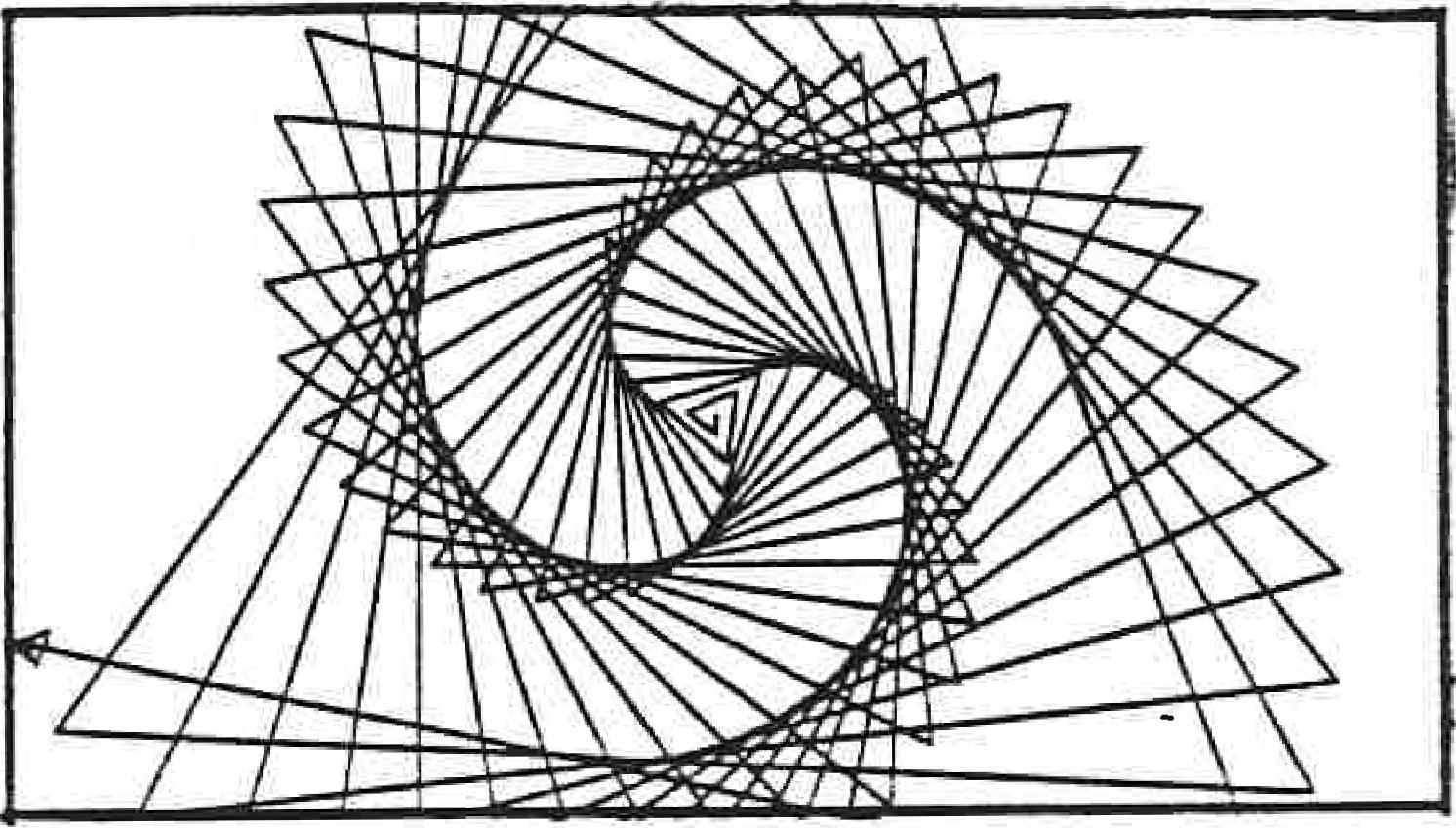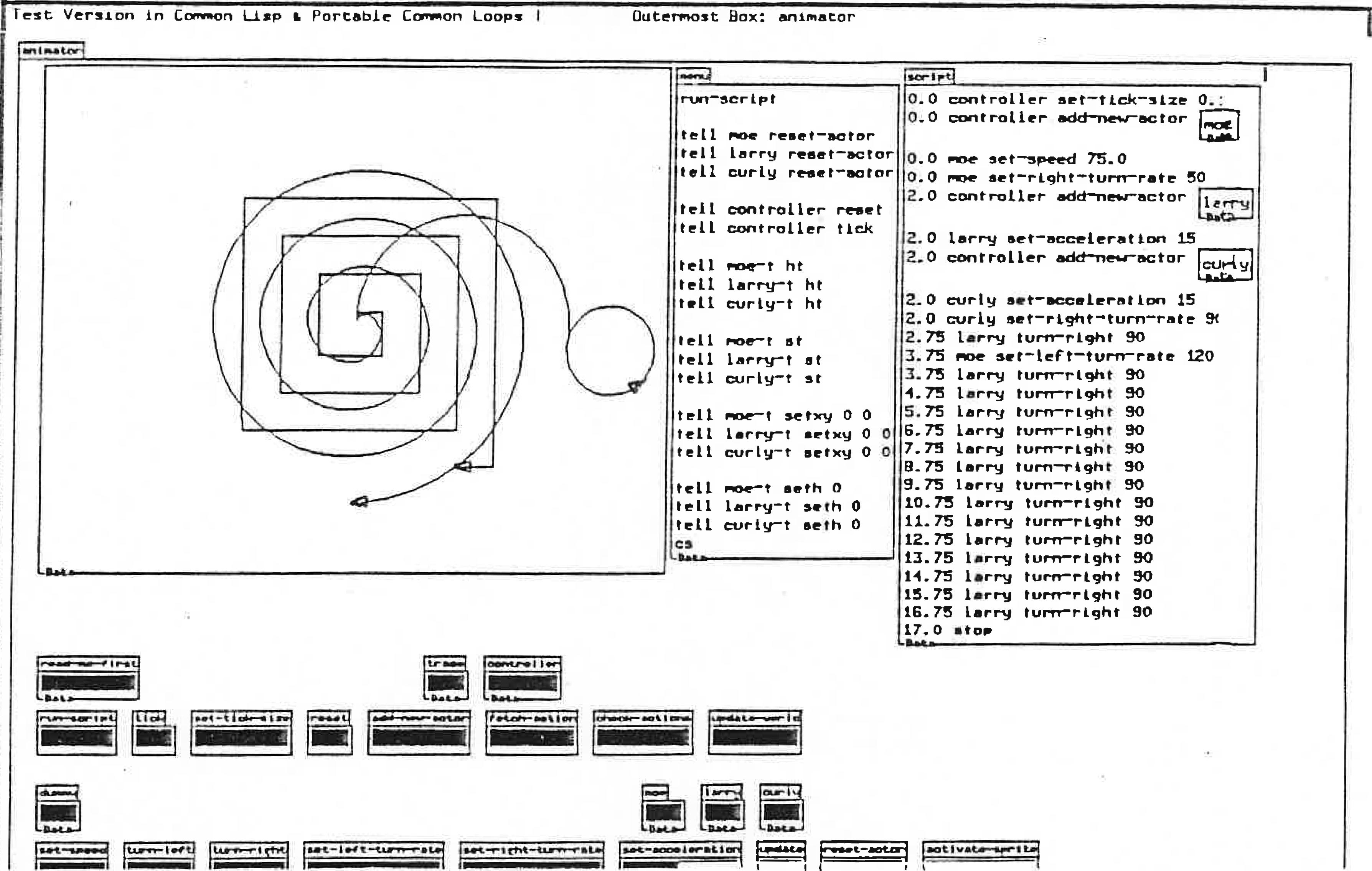Three Microworlds Sept 1989
Three Microworlds
Liddy Nevile
[for Creative and Critical Thinking Conference]
A Logo Example
The Logo turtle is what we call a 'transitional object' in a imicroworld'. The turtle has been used often in the way we are interested in using transitional objects. It is a small triangle which can be directed about the screen leaving a trace of its travels. Communication with the turtle happens in everyday language and the images which it produces on the screen can be simple or very complex:
MAKE "SIZE 5
REPEAT 100 [FORWARD :SIZE RIGHTTURN 123 MAKE SIZE SIZE + 5]

At any time a list of commands can be named and the new name is incorporated into the language. In this way complex actions can be constructed from the original set of 'primitives' (Abelson and diSessa,1981).
Two Boxer Examples
Professor diSessa is building a physics `microworld' within Boxer with some children. He is looking particularly at how the Boxer medium allows the children to represent their knowledge, how they use it to integrate and refine their understanding of physics, what they understand physics to be in the light of their empirical observation of the physical world and their representations of it in the Boxer environment, and how well they learn traditional physics having had these experiences. The final design of Boxer will be informed by this research (diSessa, 1989).
Gigante wanted to help some students with the concept of time. He introduced the place of time in kinematics in the context of actors participating in a play:
The actors are a number of turtles whose motions are controlled by different parameters: Curly is told how far forward to go, Mog has constant velocity so is told for how long to go, Larry has constant acceleration and another turtle has constant velocity and turn. 'Controller' has a script and directs the actors about the screen merely by nominating the times at which they are to start and stop acting. All the turtles can be given the same commands with respect to time and they retain their 'intelligence' about their position on the screen and how to perform other commands such as HIDETURTLE and HOME. The reactions to the time commands are obviously different in each case. (A sample screen dump from this microworid is attached.)
The animator microworid presents users with notions of time which can be used at a variety of levels of complexity and also which are used in ways which are consistent with the concept of object oriented programming - something else which was proving to be a difficult concept for the students for whom animator was originally written. The mathematical and physics concepts are not made explicit by the microworid but it is our conjecture that familiarity with the objects of the microworld and experience in interacting with them will make the abstraction of formal mathematics, physics etc more accessible to the students.

References
Abelson, H., & diSessa, A. (1981). Turtle Geometry, MIT Press, Cambridge.
diSessa, A. (1989). A Child's Science of Motion: Overview and First Results. In U. Leron & N Krumholtz (Eds.), Proceedings of the Fourth International Conference for Logo & Mathematics Education (pp. 211-230). Haifa: The Israeli Logo Centre, Technion Israel Institute of Technology.
